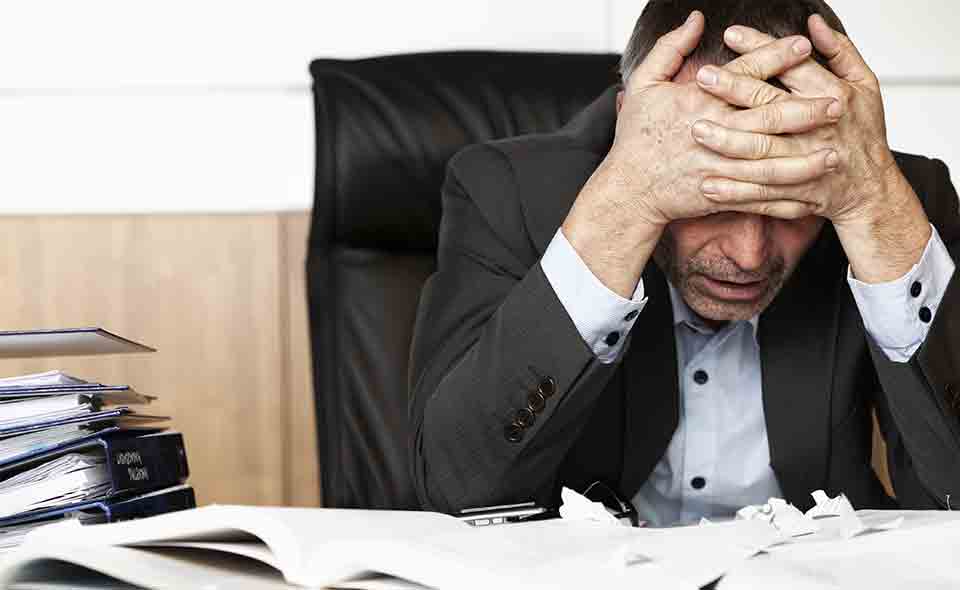Across most generations, genders, and demographics drug use in America has increased. Whether discussing heroin, prescription drugs, illegal drugs, marijuana or synthetics, American drug abuse has reached alarming levels.
With so much information available about the dangers of drug abuse in America and headline after headline about record opioid abuse and overdoses, one would think that these numbers would be headed in the opposite direction.
Why is drug use increasing in the US? Have Americans seemingly gone backward in the fight against drug abuse? Let us tackle it all in this blog.
If you or a loved one are struggling with addiction, please call 561-708-4706.
Drug Abuse Statistics in The United States
Being that drugs are illegal and many illegal drug users are not likely to openly speak about their drug habits, determining the exact scope of drug use in the U.S. is nearly impossible. There are, however, several surveys, studies and reports that suggest that drug use in America is extremely high, perhaps even approaching historic levels.[1],[2],[3],[4],[5]
- Quest Diagnostics, one of the nation’s leading providers of employee drug testing, reported in September of 2015 that the percentage of employees testing positive for drugs had reached a 10-year high. This was based on an analysis of nearly 11 million drug test results, in which 4 percent of urine tests were positive, an increase of 2.6 percent from 2014. In oral drug testing, there was a positive test increase of 47 percent over the previous three years, and positive urine tests for heroin have increased 146 percent since 2011.
- In 2014, the National Institute on Drug Abuse (NIDA) reported that an estimated 24.6 million Americans over the age of 12 had used an illicit drug during the last month. This accounted for 9.4 percent of the demographic, which is an increase from 8.3 percent in 2002.
- According to the U.N.’s World Drug Report 2016, the amount of heroin users in the United States hit a 20-year high. The number of heroin users in the U.S. reached near one million in 2014, representing a three-fold increase from 2003. Heroin-related deaths have increased five-fold since 2000.
- Results from the European Survey Project on Alcohol and Other Drugs (ESPAD) combined with those from the U.S. Monitoring the Future Survey revealed that American teens have high rates of illicit drug use disorder when compared with European teens. On average, 18 percent of European students had used an illicit drug in their lifetimes, compared to 35 percent of U.S. students.
- Since 1999, the number of drug overdose deaths involving opioids in the U.S. has quadrupled, totaling over a half a million fatalities during that period.
While we now know more than ever about the dangers of drug abuse in America, it appears that this knowledge has failed to act as a deterrent. Heroin use and overdoses have skyrocketed, more people are using and abusing prescription drugs than ever before and the rise of synthetic drugs has created a potentially more dangerous threat.[6]

The Face of Drug Addiction in the United States
With drug abuse in America being so rampant again, it’s safe to say that there are no demographics that are immune to the temptation of drug abuse. However, there are some specific groups who have seen significant increases in drug consumption over the past decade. The biggest change in drug use in America has been among groups that aren’t typically viewed as demographics prone to substance abuse.
According to the Centers for Disease Control and Prevention (CDC) the gaps in heroin use between men and women and rich and poor have narrowed throughout the 21st century.[7] From 2002 to 2013, the rate of heroin use among women increased 100 percent. During the same time, the rate of heroin use among people in households making $50,000 or more annually increased 60 percent.[8]
Women:
Women are the fastest-growing demographic of alcohol abuse and drug addiction in the United States, according to the National Council on Alcoholism and Drug Dependence (NCADD). As many as 4.5 million women over the age of 12 have a substance use disorder (SUD), 3.5 million misuse prescription drugs such as prescription stimulants and prescription sedatives, and 3.1 million regularly abuse illicit drugs. Among girls ages 12-17, nonmedical use of prescription painkillers, alcohol, methamphetamine and many other illicit drugs now either match or exceed that of boys the same age.[9]
According to the Substance Abuse And Mental Health Services Administration (SAMHSA) drug abuse statistics, of the 6.5 million Americans who misused or abused prescription drugs in 2013, more than half were female.[10]
Affluent:
Historically, substance abuse disorders in America have been viewed as a problem reserved for the poor and disadvantaged, but recent studies have begun debunking this myth. The Healthy Kids Survey, conducted in 2007 and based on responses from participants in Alameda and Contra Costa counties in California, found that wealthy kids from these areas were more likely to use drugs than their peers from poorer communities. The survey cited more disposable income, parental absenteeism and pressure to succeed as factors contributing to this.
Part of the reason why substance abuse and drug addiction in the United States are more closely linked to poverty is because low education is a risk factor for developing a substance use disorder, and most affluent people are well educated. But affluence comes with its own set of risk factors. A 2012 study published in the Journal of Studies on Alcohol and Drugs determined that young adults with the highest levels of socioeconomic status were more likely than their poorer peers to drink alcohol and use marijuana which will later on turn into alcohol addiction, marijuana use disorder and illegal drug use. [11]
Other researchers have theorized about the impact of “rich kids syndrome,” in the battle of drug use in America, where parental, social and professional obligations lead to a reduction of family-centered interactions. Psychotherapists have suggested that these affluent youths often spend more time with hired help than with their parents and lead overscheduled lives that creates mental health disorders and a lack of family closeness.
Baby Boomers:
Perhaps the most surprising demographic of Americans who are using more drugs than in the past are adults over age 50. This group is made up of baby boomers, which includes people who were born between 1946 and 1964. In many instances, these individuals stopped using drugs as they were beginning families and have now resumed use and drug abuse in America as a result of having fewer professional and familial responsibilities. This is also the generation that was historically obsessed with substance addiction, sex and rock-and-roll.
Older adults are abusing drugs, being arrested for drug offenses, having mental health issues due to drugs and dying from drug abuse in America at increasingly higher rates than in the past. The death rate by accidental overdose among those aged 45-64 has increased 11-fold from 1990 (when no baby boomers were in this age group) to 2010 (when baby boomers began joining this group daily). More than 12,000 baby boomers died from drug overdoses in 2013. The CDC estimates that 5.7 million people over the age of 50 will need addiction treatment by 2020.
“Generally, we thought of older individuals of not having a risk for drug abuse and drug addiction,” said Dr. Wilson Compton, deputy director for the NIDA. “As the baby boomers have aged and brought their habits with them into middle age, and now into older adult groups, we are seeing marked increases in overdose deaths.”
Why is Substance Abuse Increasing in the US?
It’s clear that drug addiction in the United States has increased tremendously. Over the last decade or so, what’s unclear are the specific reasons why, though there are several theories. The most obvious potential explanation is the rise in chronic pain leading to an increase in prescription opioids, which has paved a path to heroin abuse and addiction.
At some point, Americans began suffering from chronic pain at higher levels than ever before. The National Center for Complementary and Integrative Health reports that 11.2 percent of American adults experience chronic pain and 17.6 percent struggle with severe pain. An estimated 126 million Americans reported some level of pain, according to the organization’s data.[12] When you consider that prescription opioids are the most likely remedy to be prescribed to these adults and that misused prescription opioids is the strongest risk factor for heroin abuse or addiction, the correlation becomes clearer.
“People addicted to painkillers are 40 times more likely to abuse heroin.” — Source: Centers for Disease Control”
Changing Views on Drugs
Americans of all ages have a different perception of the dangers of drug addiction in America than in the past. This is especially true of marijuana, with several states now legalizing it for recreational and medicinal use. In 1969, a Gallup poll of 1,028 adults from across the nation revealed that only 12 percent were in favor of marijuana legalization. In 2001, that number had swelled to 31 percent. However, a 2015 poll showed that 58 percent were in favor of legalizing the drug.[14]
While favorable views on marijuana don’t necessarily equate to favorable views on all other drugs, it’s not too far of a stretch. The most recent Monitoring the Future Survey reported that fewer 10th graders than from the previous survey perceived a risk in taking inhalants, synthetic cathinones, crack or Vicodin occasionally.[15]
America is Stressed Out
Perhaps the simplest explanation for why substance abuse is increasing in the US is because of stress. Several employee surveys have shown that American workers are struggling with high levels of stress and anxiety related to job security, income and the threat of discrimination.
A 2015 study conducted by the American Psychological Association (APA), measuring stress on a scale from one-10 found that the average stress level for Americans stood at 5.1, a slight increase from the year before. Of those surveyed, nearly one-quarter reported “extreme stress.” Since introducing the survey in 2007, the APA has consistently found that money and work were the top two sources of stress reported among Americans.[16] The survey also found that 61 percent of adults reported experiencing unfair treatment on a day-to-day basis and that it resulted in higher levels of stress.
Another survey, which included 500 American workers, revealed that 90 percent of workers were stressed out about finances. More than 50 percent of those surveyed reported “moderate” or “significant stress.” There are many reasons why people begin to have alcohol use disorder or substance use disorders in America, but few have the same impact of stress.[17]

Drug Abuse in America: How to Reverse the Trend
Despite the war on drugs and several other efforts to curb drug use in America, these efforts have only been successful in small groups. The best way to reduce drug abuse in America is for parents and community leaders to take proactive approaches to substance abuse prevention. This includes recognizing the risk factors for developing an SUD and the signs of abuse, among many other things.
Common Risk Factors for Addiction:[18]
- Poor education
- Mental illness
- Poverty
- Parental substance abuse
- Environment
Signs of Substance Abuse:[19]
- Problems at school or work
- Physical health issues
- Neglected appearance
- Behavioral changes
- Unexplained money spending
In most cases, prevention of drug use begins at home and school. Parents need to lead by example, and educators need to be diligent in talking about the dangers of substance abuse. Among young and older adults, finding drug-free pain management alternatives in addition to healthy ways to manage stress would go a long way in reducing drug addiction in America.
Unfortunately, substance abuse and drug addiction are inevitable in every society. Natural curiosity, youthful rebelliousness and many other factors will always make it so people experiment with drugs. In some cases, that experimentation grows to abuse and then addiction. It’s at this time that you need trained professionals to help you fight back against addiction, and Behavioral Health Centers is ready to lead the way. We offer dozens of programs to treat all kinds of drug addictions. To begin drug rehab or learn more, contact us at 561-708-4706.
- https://newsroom.questdiagnostics.com/2016-09-15-Drug-Positivity-in-U-S-Workforce-Rises-to-Nearly-Highest-Level-in-a-Decade-Quest-Diagnostics-Analysis-Finds
- https://drugabuse.gov/publications/drugfacts/nationwide-trends
- https://reuters.com/article/us-drugs-usa-heroin-idUSKCN0Z90UX
- https://unodc.org/wdr2016/
- https://cdc.gov/drugoverdose/epidemic/
- https://drugabuse.gov/about-nida/legislative-activities/testimony-to-congress/2016/americas-addiction-to-opioids-heroin-prescription-drug-abuse
- https://cdc.gov/media/releases/2015/p0707-heroin-epidemic.html
- https://www.cdc.gov/vitalsigns/heroin/infographic.html
- https://ncadd.org/about-addiction/addiction-update/alcoholism-drug-dependence-and-women
- https://samhsa.gov/data/sites/default/files/NSDUHresultsPDFWHTML2013/Web/NSDUHresults2013.pdf
- https://ncbi.nlm.nih.gov/pmc/articles/PMC3410945/
- https://nccih.nih.gov/news/press/08112015
- https://cdc.gov/media/releases/2015/p0707-heroin-epidemic.html
- https://gallup.com/poll/186260/back-legal-marijuana.aspx
- https://drugabuse.gov/publications/drugfacts/monitoring-future-survey-high-school-youth-trends
- https://time.com/4253107/americans-are-getting-more-stressed-out-study-finds/
- https://www.ncbi.nlm.nih.gov/pmc/articles/PMC2732004/
- https://drugabuse.gov/publications/preventing-drug-abuse-among-children-adolescents/chapter-1-risk-factors-protective-factors/what-are-risk-factors
- https://mayoclinic.org/diseases-conditions/treatment/drug-addiction/basics/symptoms/con-20020970







